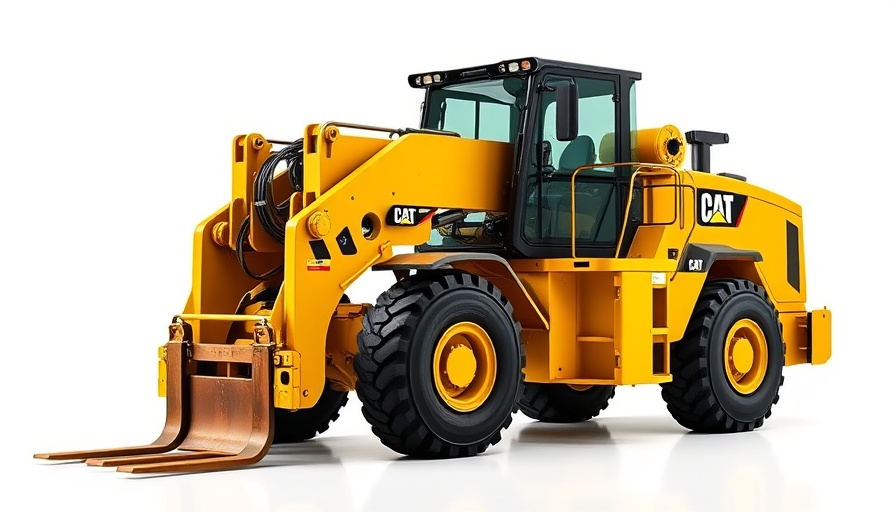
Introducing the Game-Changing Cat MH3295 Material Handler
In a pivotal move for the construction industry, Caterpillar has unveiled its latest innovation: the Cat MH3295 Material Handler. This cutting-edge machine is specifically designed to enhance high production capabilities, especially in challenging environments such as ports and large scrapyards. With its state-of-the-art swing pump, operators can expect improved efficiency and reduced fatigue while managing extensive material loads.
Enhanced Features for Optimal Performance
Built on the resilient foundation of Cat’s robust 395 excavator platform, the MH3295 Material Handler boasts an impressive 57.7-foot reach. This feature, combined with a wide-track undercarriage, allows for better stability during operation—a critical advantage when performing demanding tasks such as barge loading and unloading.
Equipped with a powerful 543-horsepower Tier 4 Final C18 engine, this material handler can maintain its performance at elevations of up to 9,840 feet without sacrificing power. Moreover, its three power modes—Power, Smart, and Eco—let operators fine-tune the machine’s output based on task requirements, ensuring that they have the necessary power when needed while optimizing fuel efficiency in lighter operations.
Smart Technology for Modern Solutions
At the heart of the MH3295's design is Caterpillar’s commitment to integrating advanced technology to boost operational efficiency. The Cat Payload system assists operators in accurately achieving load targets, while the Swing Assist feature allows for automatic stopping at preset points, enhancing precision tasks and decreasing fuel consumption.
The material handler also incorporates 2D E-fence to prevent the machine from moving outside defined operational parameters, further promoting workplace safety.
A Premium Operator Experience
Operator comfort is paramount in the design of the MH3295. The new Premium Plus cab offers 360-degree visibility, with large windows and small pillars that facilitate a clear view of the surroundings. Equipped with a touchscreen monitor and a Wide Adjustable Seat, operators can enjoy an intuitive interface and comfortable controls, capable of accommodating a diverse range of body types.
This ergonomic emphasis extends to safety features within the cab, including automatic climate control and storage compartments for essential gear. Safety measures like rearview and side-view cameras provide an additional layer of security, making it easier for operators to navigate complex job sites.
Remote Innovations for Minimal Downtime
In an era where time is often synonymous with money, Caterpillar equips the MH3295 with cutting-edge remote diagnostic capabilities. With technologies such as Remote Troubleshoot and Remote Flash, dealers can quickly diagnose operational issues, ensuring maximum uptime and allowing software updates without requiring on-site technicians.
Conclusion: Investing in the Future of Construction
The introduction of the Cat MH3295 Material Handler marks a significant milestone in construction technology, promising not only enhanced productivity but also long-term durability and value for businesses. Whether loading scrap materials or managing logistics at port facilities, this machine is set to transform operations.
For construction firms and facility managers looking to elevate their operational efficiency, investing in state-of-the-art machinery like the MH3295 could be a game-changer. Connect with a Caterpillar dealer or visit cat.com today to learn more and explore how this innovative machine can fit into your operations.
 Add Row
Add Row  Add
Add 




Write A Comment